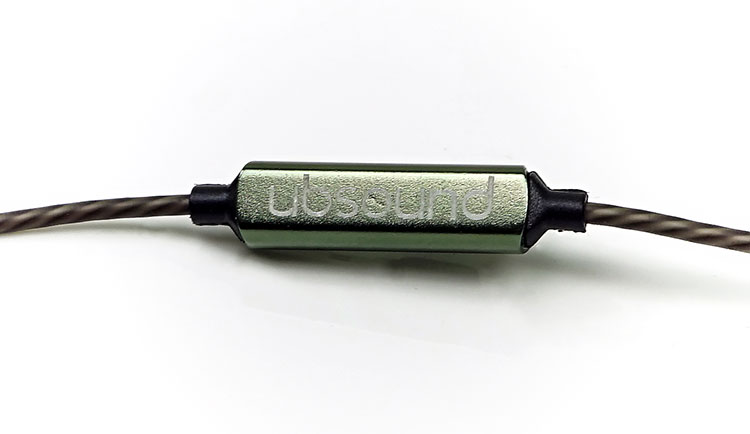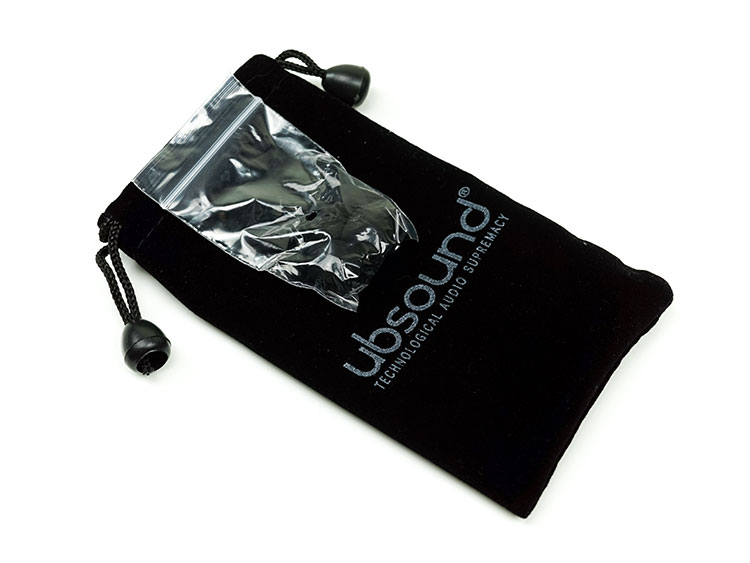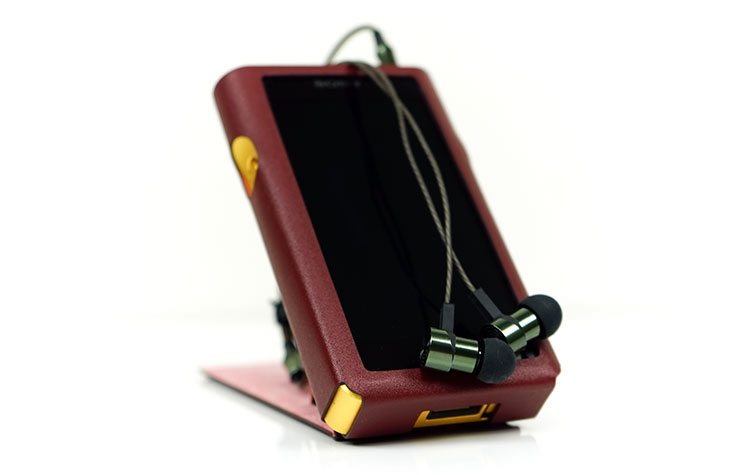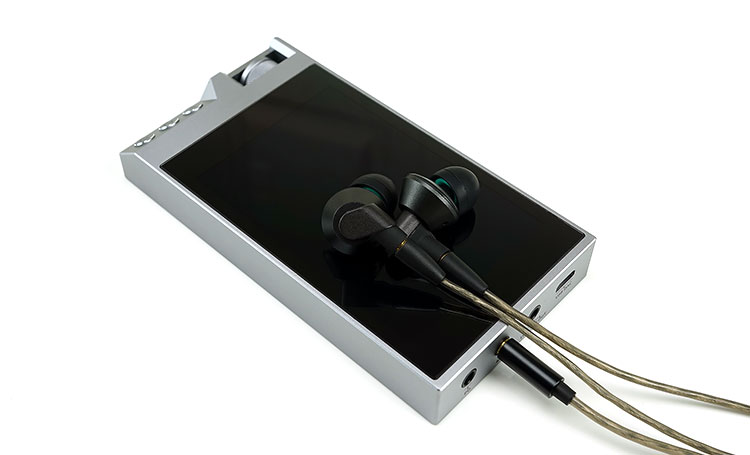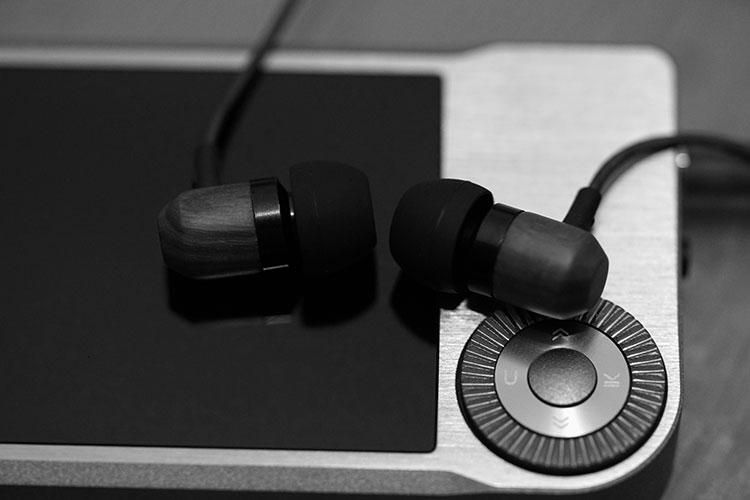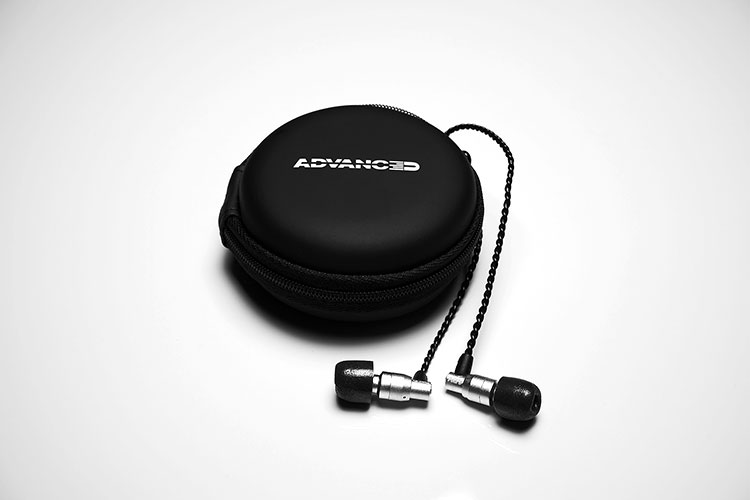The UBSOUND Magister is the latest competitively price single dynamic driver IEM from the Italian company. It is priced at $49.
Disclaimer: The UBSOUND Magister was sent to us in exchange for our honest opinion in this review and does not have to be returned. Many thanks to UBSOUND for giving us this opportunity.
To read more about UBSOUND products reviewed on Headfonics click here.
Note, this review follows our new scoring guidelines for 2020 which you can read up on here.
UBSOUND is a rare bird indeed in the audio business. I believe they are the only Italian company making IEMs at the time of writing. If you know of another feel free to leave a comment below this review.
What’s more, with the Magister, they are boldly taking on the recent wave of “Chi-fi” IEMs by going after the budget audiophile or casual listener market. This has been their stock in trade since they started back in 2014.
This is not the first time we have reviewed their products. I reviewed the Orchestra IEM back in 2016 and thought it was sort of ok but could do with some improvements in sound quality to really attract beyond the consumer market.
The Magister, I am told, is a more ambitious and bolder attempt to do just that with a sound they describe as being more reference and neutral than before. It is priced at just $49 which means it is competing with a heck of a lot of budget offerings out there of varying quality. This is now a very stiff and competitive entry-level market.
Company Pitch
Neutral Sound
UBSOUND are pitching the Magister as their first neutral acoustic signature IEM and a break from their past V-Shaped offerings such as the Orchestra and Fighter. To be precise the Pr sheet quoted the Magister as having an ‘honest natural sound and rich in acoustic detail’.
All-Aluminum
The Magister is also being positioned as having a much higher build quality than previous offerings with a sturdier aluminum build. They believe will make it their more robust offering to date in the market and yet still retain a competitive price point.
Easy To Drive
The final pitch sees ‘s UBSOUND stay true to their roots with the Magister by developing a single dynamic driver IEM with an output impedance of 16Ω. This keeps the Magister within range of smartphone users as well as moderate DAP sources.
Build Quality
Form Factor
The Magister uses a single 6mm micro dynamic driver encased in relatively elegant bullet type aluminum form factor. It is reasonably light with clean lines and a much better standard of polished finish than before. Certainly, the Magister is UBSOUND’s best build quality to date and I can see no durability issues in day to day handling.
The bullet form factor comprises of three parts. A fairly short nozzle with a well-defined tip lip, a slightly wider main chamber and a circular contoured backplate which also acts as a resting point for the rubbery wire guide that goes around it. The bass vent, as is obligatory on DD IEMs is just underneath the main chamber right beside the stem and is fairly discreet.
The Magister is not detachable which is a shame because I would have loved to have seen how it performs with upgraded cables. The rubber stem itself acts as a strain relief for the cable so it does have some flexibility.
Cable & Connections
Stock Cable
The Magister uses a 1.2m OFC 4-wire cable with a rubber jacket. It is very microphonic free, particularly if worn over the ear. Memory retention is also very low and it does feel fairly durable. The cable is terminated with a fairly long 3.5mm 4-pole gold plated TRSS jack with decent strain relief and an attractive gold banding finish at the top.
Remote playback & Mic
The cable is terminated with one of the nicer looking in-line remote mic and playback modules. It is finished in a matching aluminum shell with a single multi-click button for playback, pause, and track forwarding. A long press will bring up ‘OK Google’ Services also (Android 7.0 upwards). The mic is fairly high up the right side so no issues on voice clarity using an LG G6 and my older Blackberry Passport.
Comfort & Fit
Given that the Magister has no memory hooks it can be worn straight down or over the ear. If you want a microphonic free experience my suggestion is to go over the ear.
The bullet type form factor means you will have no issues on levels of comfort but the seal will be dependent on how secure the Magister is in your ear. Running the cable over your ear will provide a more secure fit though it will bring the remote module very close to your right ear. Some users may prefer the module a bit lower down.
Tips
The level of the seal, as with all bullet type form factor IEMs, is heavily depending on the supplied tips. The Magister only comes with small, medium and large single narrow bore silicone tips. I would have loved to have seen the inclusion of some foam tips or dual flange as they tend to increase the levels of isolation.
That being said the supplied tips actually do a very good job of keeping out the background noise and are also fairly comfortable. If you do decide to go with foams I believe the 400 range of Comply fitting foams, (TS, Sx, and T), will work just fine based on the perfect fit of Campfire Audio foam tips on the Magister. My own personal favorite was a set of medium Spinfits. Compared to the stock tips I felt the superior seal of the Spinfits produced a more defined and snappier low-end and more depth to the staging as a result.
Accessories & Packaging
You get only the basics with the Magister but then apart from notable exceptions such as the FiiO F5 I never really expected a wide range at this price point. You do get a soft velvet feel black pouch with the UBSOUND logo and a bag of single silicone bore tips in small, medium and large.
All of this is tucked into a small professionally finished black cardboard retail box with plenty of branding and imagery front and rear. I personally would have preferred a small pill zip case and an additional set of foam or dual flange tips though I am not sure if the cost would go up as a result.
Sound Impressions
Tonality & Presentation
Tonally, I do not find the Magister to be that neutral sounding. However, I do find it more resolving and a huge step up on their lower priced Orchestra offering. The presentation is still on the consumer side of things but the V-Shape is not quite as emphasized as before.
This is more of a u-shape with an elongated but linear drop from an emphasized sub-bass presence to around 800Hz or the lower mids. I do find a mild vocal emphasis with a slight elevation from 800-1k but it drops again to around 6k. From 6k to 10k the Magister gets a fairly high degree of elevation which drops off post 12k. One thing you can’t accuse the Magister of is a lack of sparkle or top-end energy.
As a result of that dip, the mids on the Magister are a little diffuse with instrumental positioning a little far from the front but not so much to sound sucked out or veiled. That 1k bump really was important to give vocals some solid focus and clarity. Higher pitched vocal presence lack a little air in deference to that continued dip up to 6k which tends to mute the upper mids and lower treble energy.
Bass
Bass is quite dominant on the Magister but it is more sub-bass rumble than mid-bass emphasis. As such I find it a deep sounding, powerful in many ways but also lacking a little in impact and definition.
I tend to EQ this down a little for rock and metal genres by around 4-5dB just to give the mids a bit more space and allow them to come to the fore. That tends to strip out a bit of that low-end warmth from bleeding into the lower mids. However, for harder-hitting dance and R’n’B, I suggest just letting it roll to the max with a set of Spinfits and enjoy it rather than getting lost in any analytical monolog on “correctness”.
Mids
Because of the long linear drop, you do get a bit of warmth traveling up into the lower mids of the Magister so instrumental timbre is on the warm side, certainly warmer than the F5 though detail and texture are on the same level as the FiiO competitor.
Odd harmonic infusion is a bit on the lower side for all but the highest-pitched percussion work so it is a little soft and too rounded for stringed tonal accuracy 1k and below. Cymbal and hi-hat work has a bit more edge to it given the better upper treble emphasis and stronger odd harmonics presence in their timbre. That being said, the Magister is sibilant free in all but the worst compressed recorded stuff you can throw at it so it has more of a forgiving nature than the F5.
Vocals
Vocal presence is not overly dipped with that little ridge at 1k but it does sound clearer and more focused when the lower mids are not overly pushed on the Magister. The Magister mids signature will tend to suit male vocals or specifically lyric tenor vocalists, similar in tone and tessitura to that of Richard Marx, Steve Perry, and Steven Tyler.
Guys with medium or light “mass” in their pitch and a well-developed mixed voice over a simple instrumental arrangement tend to fare better than say Tom Ayara’s visceral rage over Kerry King’s relentless shredding. Female vocalists or sopranos with good lower and mixed register pitching (C3-B3) and (A4-G5) perform much better than falsetto work up to D6 where it can get a bit thin sounding on the Magister.
Treble
The Magister has that continued dip right up to around 6k. It sucks a little bit of energy and air from the upper mids and lower treble performance. Percussion lacks a bit of presence but at the same time, it is more forgiving with a lack of harshness or sibilance. I do find myself EQ’ing the 4-6k range by 2-3dB for classic rock recordings so they do not sound overly soft. It does respond quite well to EQ by the way.
The upper treble elevation from 7-10k is around +5-6dB over the 2-6K performance on the Magister. It balances out the sub-bass presence quite well producing decent levels of air and headroom. It also adds some vital clarity to cymbal and hi-hat timbre strikes without which this would have been a very dark presentation.
Matchability
Efficiency
The Magister is rated at 16Ω and 115dB and will match well with good smartphones, DAPs, and other moderate sources. Honestly, its fairly easy to drive but you do need a bit more volume in low gain than what I expected for that rating.
Just to give you some context using the FiiO X5ii in low gain compared to a few competing units. The Magister will go louder quicker than the Advanced M4 which is also 16Ω but at much lower sensitivity rating of 92dB. The Magister is a little louder and more efficient than the FiiO F5 which is rated as less efficient at 32Ω and 102dB. It is also slightly easier to drive and a little louder than the Shozy Zero which is rated at 32Ω and 94dB.
Noise
There are no issues on high noise floors from the DAPs we tested the Magister with. This included the FiiO X5iii which is known to have detectable hiss with sensitive IEMs as well as the ALO Audio V5 portable tube amp which also shows up hiss on a lot of our IEMs.
Scaling & Synergy
I do find the Magister to perform better with better amp signals so it does have largely positive scaling properties. Tested with an HA-2SE on an OTG connection the Magister imaging and instrumental separation was better than on a smartphone alone. The low-end tightened up a bit more and the top end sounded a lot smoother with a bit more lower treble life about it.
The pairing with the RHA Dacamp L1 was also very impressive though the sensitivity levels of the Magister were too high to get any reasonable volume control. The Dacamp L1 is perhaps too power and also way too high end as a likely pairing.
A more likely pairing is with DAPs like the AP60 II at around $80 or the Cayin N3 at a slightly higher $149. My own personal preference was the N3 over the AP80. It has more power with better dynamics and a little more richness in its timbre than the AP60 II.
Select Comparisons
FiiO F5
$64.99
Technical
The F5 from FiiO is a single and large 13.5mm DD IEM rated at 32Ω and 102dB. It is a fantastic value package with a detachable MMCX cable system and they do include both balanced and single-ended cables as standard alongside a good array of tips and a strong black hard carry case. Tough to beat in terms of features out of all the IEMs mentioned though do note it is the most expensive out of the IEMs compared.
Isolation and comfort are on par with the Magister though the fitting is more unique with its “back to front” insertion technique so not quite as universal as the Magister’s bullet form factor.
Performance
The F5 is a little harder to drive but not by a huge amount. You can switch over to the balanced cable if your source has that option and there is excels over single-ended. The Magister has the edge in efficiency when both are single-ended.
Both are good on high noise levels performance so you will not have hiss issues on the likes of the FiiO X5iii DAP. Both will work well on smartphones but I find the additional power of a good DAP or a small DAC/amp attached tighten up both IEM’s in terms of low-end definition and instrumental separation.
The Magister is a touch darker sounding than the F5 with more depth but a more dipped midrange and a muted lower treble performance. You will get more sub-bass rumble and power from the Magister compared to the F5 which dips slightly in favor of more mid-bass presence.
Lower treble on the F5 has more presence, in fact from 2-4k in the upper mids the F5 has more energy and sounds the cleaner and more open of the two as a result. The Magister opts instead for a warmer denser sound that delivers more weight and a thicker vocal but has a slight veil due to the muted upper mids. Both have good upper treble extension and energy with the Magister perhaps exhibiting a little more headroom between the two.
Shozy Zero
$59.99
Technical
The Zero is an attractive looking wood-finished single dynamic driver IEM rated at 32Ω and 94dB. Like the Magister it uses a standard bullet form factor so it is also fairly dependent on the tips used for achieving a good seal and comfort levels. With Spinfits both are identical for isolation and comfort levels.
Neither have detachable cables which is not so much of an issue with the Magister as it is a fairly robust and low noise cable. The Zero’s cable is quiet but much more memory retentive and a constant battle to prevent the mystic tangling demon from messing with its mojo. The Zero does not have a playback and mic module either despite being a little more expensive than the Magister.
Performance
The Zero is a little harder to drive than the Magister but not overly so, perhaps 1-2 steps on most setups. It does not have a balanced option like the F5 so if the Magister has the clear edge in efficiency on weaker sources.
Tonally the Zero is warm but has less low-end power than the Magister. The Magister hits a little harder for me with a more dominant sub-bass presence but it the ‘boomier’ of the two. The Zero also has a similar slow linear drop to about 1k so its upper bass and lower mids retain a little bloom and warmth with a richer and warmer instrumental timbre than the F5.
The Zero mids have a little hump at 2k but otherwise are quite balanced sounding. It does not have an upper mids and lower treble elevation like the F5 but it is not quite as dipped as the Magister’s upper mids and lower treble so a little more forward sounding. The Zero’s roll off a little earlier than the Magister so it is not quite as sparkling or airy. The Zero peaks around 5k before starting to fade away so it lacks a little sparkle and top-end extension to deliver any serious staging height.
As such the Zero is really a mid-bass, lower mids and vocal performer compared to the Magister’s sub-bass, male vocal, and upper treble accents. I would take the Zero for classic rock, indie rock and female vocals and the Magister for deeper hitting EDM, RnB, and synth-heavy compositions.
Advanced M4
$39.99
Technical
The Advanced M4 started at a much higher price but is down to a very competitive $39. It is also a single dynamic driver rated at 16Ω but at a very inefficient 92db. The M4 is a similar bullet type form factor though the finish is not as polished looking and as attractive as the Magister’s shinier more pro finish.
Both use non-detachable cable designs, however, the cable on the M4 is excellent. this is 4-wire braided, very durable and very quiet. It also has a similar inline playback and remote mic module as the Magister which operates in exactly the same manner on smartphones. It also features a right-angle 3.5mm jack with very strong strain relief compared to the Magister’s longer straight jack.
Performance
In all scenarios, we tested the M4 is much less efficient than the Magister and does require more gain to volume match. My preference for the M4 is to strap it to a small portable amp or stronger source than a smartphone. Both perform very well for hiss with neither showing any problems with sources and amps with high noise floors.
Tonally, the M4 is more V-shaped than the Magister but it is the Magister that has more sub-bass quantity and impact. The M4 is perhaps the slightly cleaner of the two with its more neutral instrumental timbre due to a greater lower midrange dip and more energy in the upper mids and lower treble from 2k-4k. The Magister has more body and a weightier note and a slightly warmer timbre.
Vocals on the M4 are further back and lacks a bit more presence than the Magister’s richer vocal delivery. On the flip side, the better lower treble energy on the M4 provides better contrast and snap in percussion and a slightly brighter higher-pitched vocal performance. This is where the Magister will sound a bit more subdued but also a bit more forgiving with less potential for sibilance.
The M4 treble peaks around 5-7k then starts to roll off so it is not as airy or extended sounding as the Magister which rises and peaks closer to 8-10k before energy starts to attenuate.
Our Verdict
The Magister is by far UBSOUND’s best sounding IEM to date with far more audiophile sensibilities in terms of resolution in the sound, a polished and robust build quality, and a sensible easy to work with levels of comfort and isolation. The price point is spot on for me for this kind of performance.
I would love to see them work on this a bit more though just to lower the sub-bass quantity down a bit and increase the level of upper mids and lower treble energy for something truly neutral. Also, bring in a detachable cable and a few more tips options in some sort of ‘Magister Pro’ edition. Even if it costs a few bucks extra there is plenty of potential in this driver.
As such the Magister still has a strong legacy of consumer-style “fun tuning” rather than pure neutrality and accuracy. It will definitely suit modern EDM and RnB lovers over classic rock and jazz fans. Throw in a bit of judicious EQ’ing though and the Magister does respond surprisingly well which may endear itself to quite a lot of first-time upgraders.
Magister Technical Specifications
- HD 6mm independent dynamic drivers
- Sensitivity: 115dB/mW
- Frequency response: 15-22.000Hz
- Impedance: 16Ω
- Maximum distortion <0,2%
- 1,2m rubber wrapped tangle-free braided wire
- All parts made of aluminum






